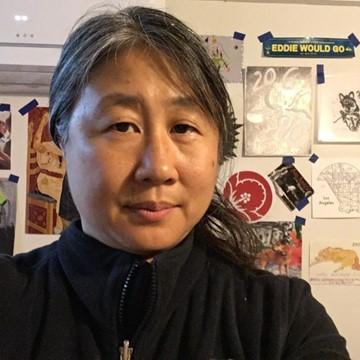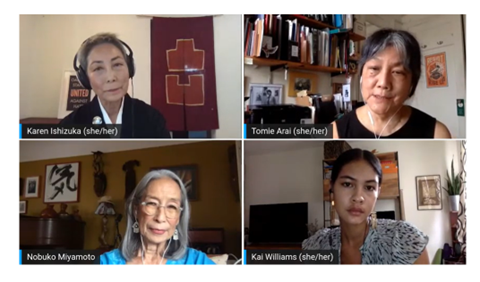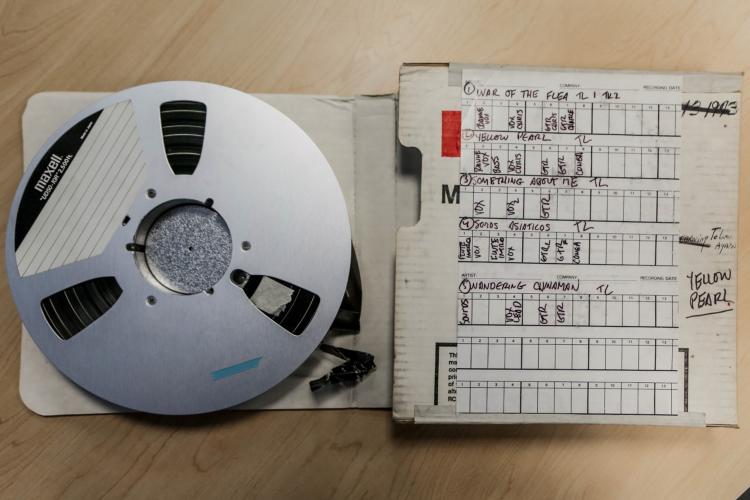
Sojin Kim, photograph courtesy of Sojin Kim.
Sojin Kim is a Curator of Women’s Cultural Heritage at the Smithsonian Asian Pacific American Center. Her work is supported by Smithsonian American Women’s History Initiative Pool, administered through the Smithsonian American Women’s History Museum.
Kim is a folklorist and public historian. She has been involved in several recent Smithsonian Folklife Festival programs including D.C.: The Social Power of Music in 2019. Kim is currently working on an exhibition looking at the experience of Asian Americans in Washington, D.C., which will be on display at the Smithsonian American Art Museum in 2024.
How do you approach women’s history?
Accounting for the experiences and perspectives of women has always been inherent to my work. My curatorial approach is through collaboration with people whose expertise and experiences have been historically marginalized or excluded. This involves not only thinking about the gender of project contributors, but moving beyond a mindset that prioritizes the work of an individual "expert" or author. I commit a lot of energy into a process that is reciprocal and co-creative.
Describe a women’s history project that was significant for you.
In summer 2020, during the early months of the COVID shutdown and barely a month after George Floyd was killed, I organized an online program, “The Art of Movement and Coalition Building: Learning from Yuri Kochiyama.” This program was a collaboration among the Smithsonian Folklife Festival, the Smithsonian Asian Pacific American Center, Japanese American National Museum, and Tadaima!: A Community Virtual Pilgrimage.

Screen capture from the virtual program “The Art of Movement and Coalition Building: Learning from Yuri Kochiyama.” Center for Folklife and Cultural Heritage, 2020.
The program was an intergenerational conversation among women mentored by Yuri Kochiyama (1921-2014), an iconic activist involved in Malcom X’s Organization of Afro-American Unity, the Republic of New Africa, Puerto Rican nationalism, Japanese American redress and reparations, and many other actions supporting human rights. The women were artists of various disciplines—music, words, film, and visual art—who affirmed the importance of creativity to movement building. At a moment when there was much public talk about a national “racial reckoning,” they each offered insight about what effective allyship can look like and how to build meaningful coalitions in service of racial and social justice. Kai Williams, the youngest of the group and the great granddaughter of Kochiyama, stated “What Yuri can teach us is that it is productive to work together—not to erase distinctions, but to recognize commonalities in our oppressions so that we can collectively combat systems responsible for all of our oppressions. Solidarity acknowledges that no one is free until everyone is free. All lives cannot matter until Black lives matter; and that when we see our interconnectedness, we are enabled to access collective power.”
What’s one Smithsonian women’s history object you love? What’s one women’s history story that you wish more people knew?
I’d like to shine a light on a pair of connected stories and SI collections involving two extraordinary women: Nobuko Miyamoto and Barbara Dane. A Grain of Sand: Music for the Struggle by Asians in America is an album that is part of the Smithsonian Folkways catalog. It is considered one of the first albums that expressed a distinctly Asian American identity and perspective. The trio of artists who recorded the album in 1973 includes musician and activist Nobuko Miyamoto. The album was recorded on the Paredon label, which was co-founded by Barbara Dane and her husband Irwin Silber. Dane herself is an activist and singer of great power—in addition to having a record label with a remarkable history of uplifting people's grassroots struggles against injustice around the world. The entire Paredon catalog is now part of Smithsonian Folkways catalog.

One of the master recording reels for the album A Grain of Sand: Music for the Struggle by Asians in America (1973). Ralph Rinzler Folklife Archives and Collections, Center for Folklife and Cultural Heritage.
Why is women’s history work vital for the Smithsonian?
For those of us working within the Smithsonian it's essential that we recognize how knowledge is held and kept by many people and in many places. It's not simply the domain of academics or experts with formal credentials. We should not as a matter of fact relay the accounts or perspectives of the loudest or most familiar voices of "authority." What the Smithsonian documents, interprets, stewards, and shares should comprise multiple, diverse ways of knowing and doing that evolve over time.
Related Posts
The Smithsonian American Women’s History Initiative Pool, administered by the Smithsonian American Women’s History Museum, funds curators to change the way the Smithsonian researches and shares American women’s history across our museums and centers.